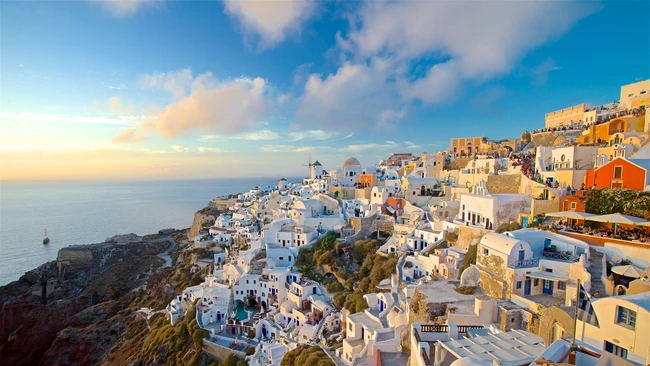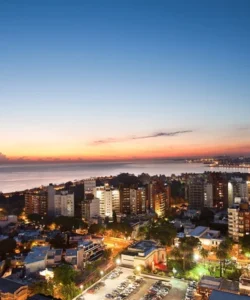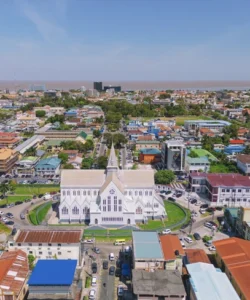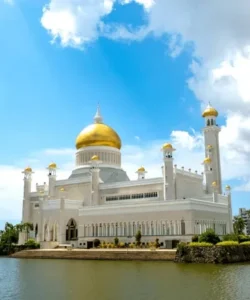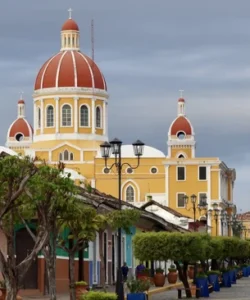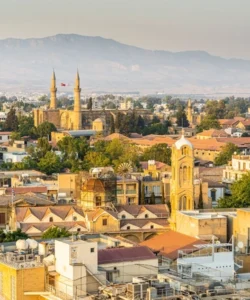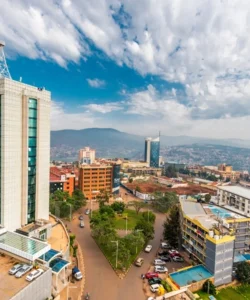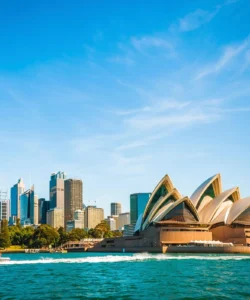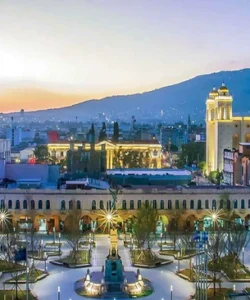Greece, officially the Hellenic Republic, is a country in Southeast Europe, situated at the southern tip of the Balkan Peninsula. With a vast coastline and numerous islands in the Aegean, Ionian, and Mediterranean Seas, it is a cradle of Western civilization and a hugely popular tourist destination.
Area and Population:
Greece covers a total land area of approximately 128,900 km² (49,769 sq mi). As of early 2025, the population of Greece is estimated to be around 9.9 to 10.3 million, depending on the source, with a slight decline observed in recent years.
Capital:
The capital city of Greece is Athens.
Major Cities:
Besides Athens, other major cities include Thessaloniki, Patras, Larissa, and Heraklion (Crete).
Language:
The official language of Greece is Greek. English, German, French, and Italian are commonly learned foreign languages.
Currency:
As a member of the European Union, Greece uses the Euro (€) as its official currency.
Religion:
The dominant religion in Greece is Greek Orthodoxy, with the vast majority of the population identifying as Greek Orthodox. There are smaller communities of Muslims, Catholics, and other religious groups.
Attractions and Wonders:
- Ancient Wonders & Historical Sites:
- Acropolis of Athens: A UNESCO World Heritage site, home to the Parthenon, Erechtheion, and Propylaea, symbolizing ancient Greek civilization.
- Parthenon, Athens: The iconic ancient temple on the Acropolis, dedicated to the goddess Athena.
- Ancient Agora of Athens: The ancient marketplace and civic center of Athens.
- Delphi Archaeological Site and Museum: A UNESCO World Heritage site, home to the Oracle of Apollo, offering stunning views and significant ruins.
- Olympia Archaeological Site: The birthplace of the Olympic Games, with ancient stadiums, temples, and training facilities.
- Knossos Palace, Crete: The center of Minoan civilization, offering insights into one of Europe’s earliest advanced cultures.
- Mycenae: An important archaeological site of the Mycenaean civilization on the Peloponnese peninsula.
- Temple of Olympian Zeus, Athens: The impressive ruins of a colossal temple dedicated to Zeus.
- Temple of Poseidon, Sounion: Perched on a cliff overlooking the Aegean Sea, offering breathtaking sunset views.
- Natural Beauty & Islands:
- Santorini: World-famous for its caldera views, white-washed villages (Oia, Fira), stunning sunsets, and unique volcanic beaches.
- Mykonos: Known for its vibrant nightlife, picturesque windmills, charming Chora (main town), and beautiful beaches.
- Crete: Greece’s largest island, offering diverse landscapes from beaches to mountains, ancient ruins, charming towns, and delicious cuisine.
- Rhodes: A large Dodecanese island with a medieval Old Town (a UNESCO site), ancient ruins, and lovely beaches.
- Corfu (Kerkyra): An Ionian island known for its lush green landscapes, Venetian architecture, and beautiful beaches.
- Zakynthos (Zante): Famous for Navagio (Shipwreck Beach) with its iconic shipwreck.
- Meteora: A UNESCO World Heritage site featuring impressive rock formations topped with historic monasteries, seemingly suspended in the air.
- Vikos Gorge: One of the deepest gorges in the world, located in the Pindus Mountains.
- Mount Olympus: The highest mountain in Greece, legendary home of the Olympian gods.
Architecture:
Greek architecture has had a profound and lasting impact on Western civilization.
- Ancient Greek Classical Orders: The most formal type of ancient Greek architecture, characterized by three distinct styles:
- Doric Order: Sturdy and simple, with fluted columns and plain capitals (e.g., Parthenon).
- Ionic Order: More slender and elegant, with scroll-like volutes on the capitals (e.g., Erechtheion).
- Corinthian Order: The most ornate, with capitals decorated with acanthus leaves (less common in pure Greek architecture, popularized by Romans).
- Byzantine Architecture: Developed after the Roman period, characterized by domes, arches, and intricate mosaics (e.g., churches in Thessaloniki, Mystras).
- Ottoman Architecture: Left its mark in some cities with mosques, bathhouses, and traditional residential buildings, particularly in northern Greece and on some islands.
- Venetian Architecture: Prominent in the Ionian Islands (Corfu) and parts of Crete and the Aegean, featuring elegant multi-story buildings, arched doorways, and colorful facades.
- Neoclassical: Influenced by a revival of classical styles in the 19th and early 20th centuries, especially in Athens (e.g., Academy of Athens, National Library).
- Cycladic Architecture: Unique to the Cycladic islands (Santorini, Mykonos), characterized by white-washed cubic houses, flat roofs, and narrow alleys designed to cope with strong winds and summer heat.
- Modern and Contemporary: Found in major urban centers, reflecting contemporary trends and blending with traditional elements.
Roads:
Greece’s road network has seen significant improvements, especially on its main arteries, particularly with the development of modern motorways.
- Motorways (Ethniki Odos – National Roads/Highways): An expanding network of modern highways (often tolled) connects major cities and regions, providing efficient travel across the mainland. Examples include the Egnatia Odos (crossing northern Greece) and sections connecting Athens to Patras and Thessaloniki.
- National and Regional Roads: A comprehensive network of secondary roads connects towns and villages. Quality can vary; while many are well-maintained, some in rural or mountainous areas can be narrower, winding, or in poorer condition.
- Island Roads: Roads on the islands range from excellent main routes to challenging unpaved tracks, depending on the island and its development.
- Signage: Road signs are generally clear, often in both Greek and English.
Driving is a good way to explore the mainland and larger islands, offering flexibility to discover hidden gems.
Hotels:
Greece offers a vast and diverse range of accommodation options, from luxurious resorts to charming boutique hotels and traditional guesthouses.
- Luxury Resorts: Especially prevalent on popular islands like Santorini, Mykonos, and Crete, offering high-end amenities, private pools, and stunning views.
- Boutique Hotels: Many stylish and unique boutique hotels can be found in historic city centers (Athens, Thessaloniki) and picturesque island towns.
- Traditional Guesthouses (Xenones): In smaller villages and rural areas, providing an authentic experience and local hospitality.
- Apartments and Villas: Popular choices, especially for families or groups, offering self-catering options and privacy.
- All-Inclusive Resorts: Common in larger tourist areas, offering convenience and a wide range of facilities.
- Hostels: Available in major cities and popular backpacker destinations.
Restaurants and Cuisine:
Greek cuisine is renowned for its fresh ingredients, vibrant flavors, and healthy Mediterranean influences. It’s built on a foundation of olive oil, fresh vegetables, herbs, grains, fish, and various meats.
- Staple Dishes:
- Moussaka: Layers of seasoned minced meat, eggplant (or potatoes), and a creamy béchamel sauce, baked until golden.
- Souvlaki: Grilled skewers of meat (pork, chicken, lamb), often served in pita bread with tzatziki, tomato, and onion.
- Tzatziki: A refreshing dip made from strained yogurt, cucumber, garlic, olive oil, and herbs.
- Greek Salad (Horiatiki Salata): A simple but delicious salad with tomatoes, cucumber, red onion, bell peppers, Kalamata olives, feta cheese, and olive oil.
- Spanakopita: Savory spinach pie made with phyllo pastry and feta cheese.
- Gyros: Roasted meat (pork, chicken, occasionally lamb) shaved from a vertical spit, served in pita bread with tzatziki, tomato, onion, and fries.
- Saganaki: Pan-fried cheese, often flamed with ouzo.
- Dolmades: Grape leaves stuffed with seasoned rice (and sometimes minced meat).
- Pastitsio: A baked pasta dish with spiced ground beef and a béchamel topping.
- Grilled Seafood and Fish: Abundant along the coast and islands, often simply grilled with olive oil and lemon.
- Desserts:
- Baklava: Layers of phyllo pastry filled with nuts and sweetened with syrup.
- Loukoumades: Small, deep-fried doughnuts drizzled with honey and cinnamon.
- Yogurt with Honey and Walnuts: A simple yet classic Greek dessert.
- Drinks:
- Ouzo: An anise-flavored aperitif, the national drink, often served with water (turning it cloudy) and mezedes (small appetizers).
- Tsipouro/Tsikoudia (Raki): A strong pomace brandy, popular in different regions.
- Greek Wine: With a long history of winemaking, Greece produces a variety of unique and excellent wines, from crisp whites like Assyrtiko (Santorini) to robust reds like Agiorgitiko.
- Mastic Liqueur (Mastika): A unique sweet liqueur made from the resin of the mastic tree, primarily from the island of Chios.
- Greek Coffee: Strong and traditionally prepared, similar to Turkish coffee.
- Frappé: A popular iced coffee drink.
Dining experiences range from traditional tavernas and ouzeries (serving mezedes) to casual street food vendors and upscale fine dining restaurants, especially in major cities and popular islands. “Filoxenia” (hospitality) is a cornerstone of Greek culture, making dining a warm and welcoming experience.
